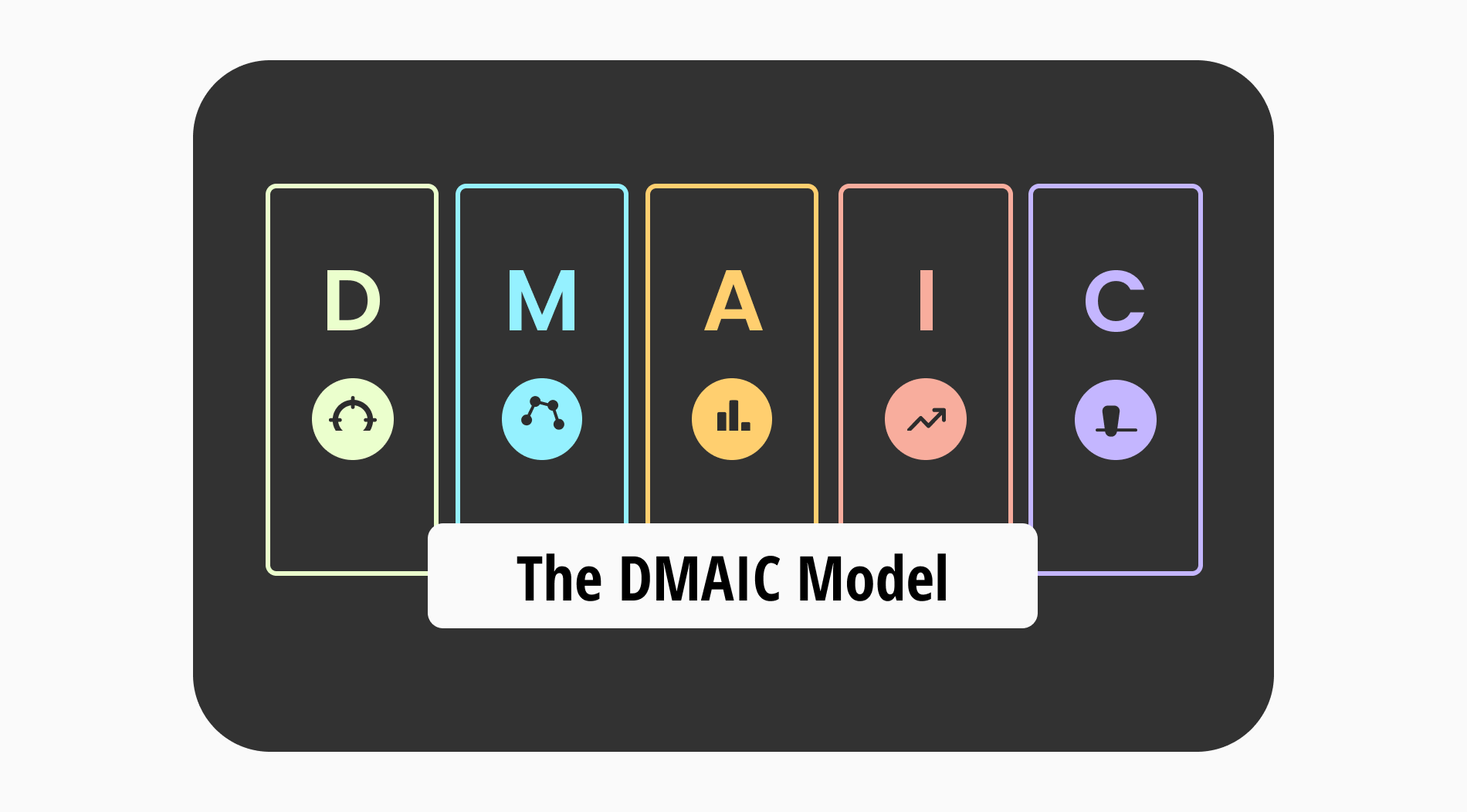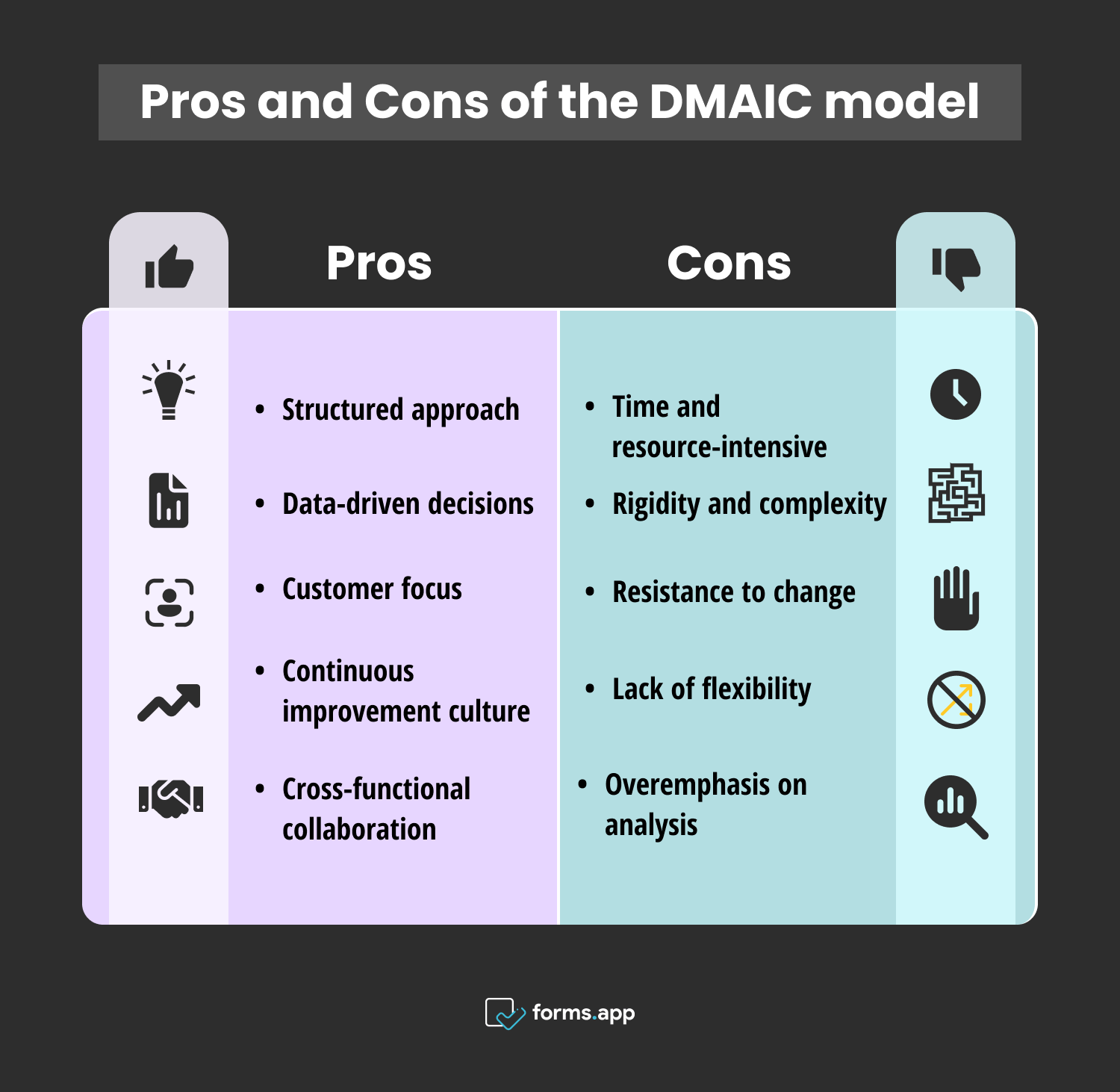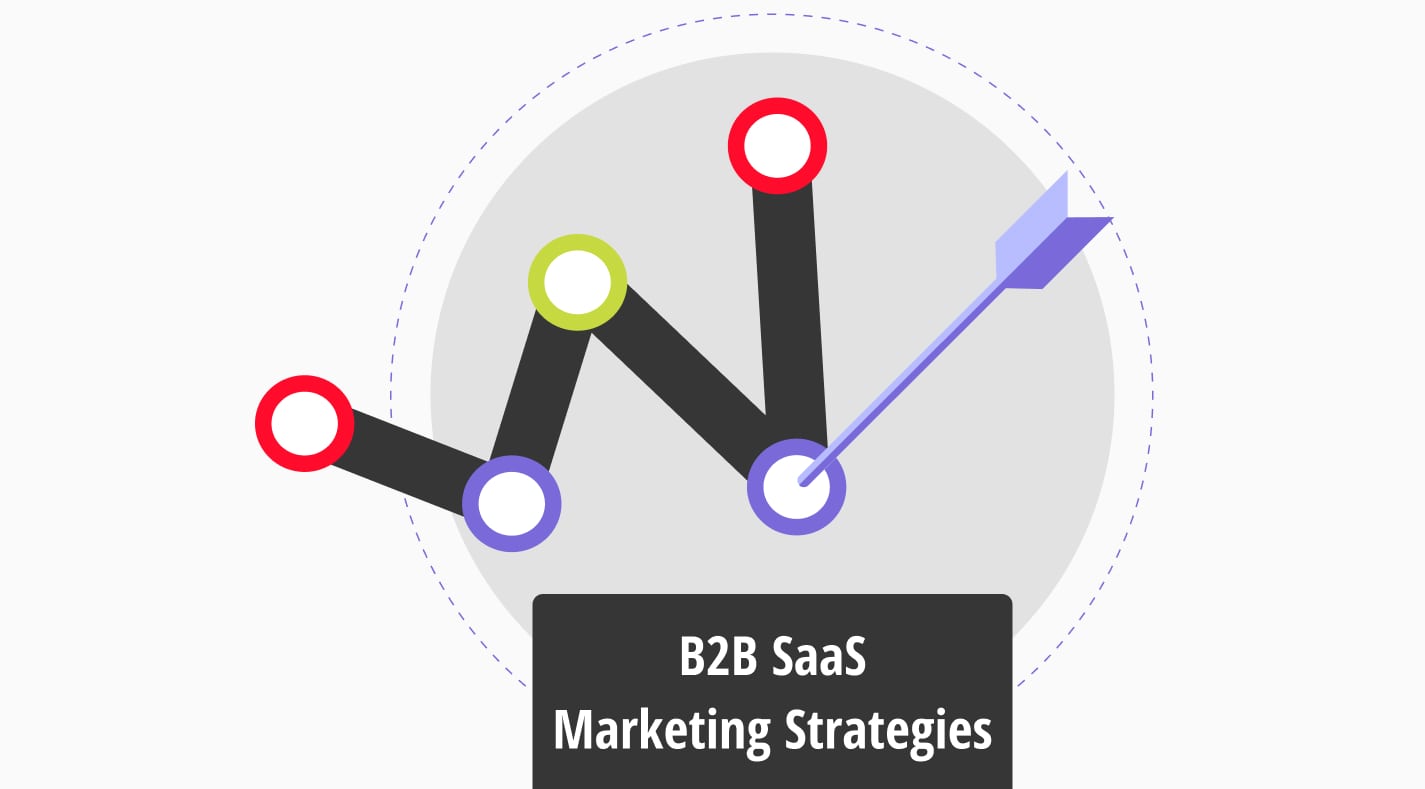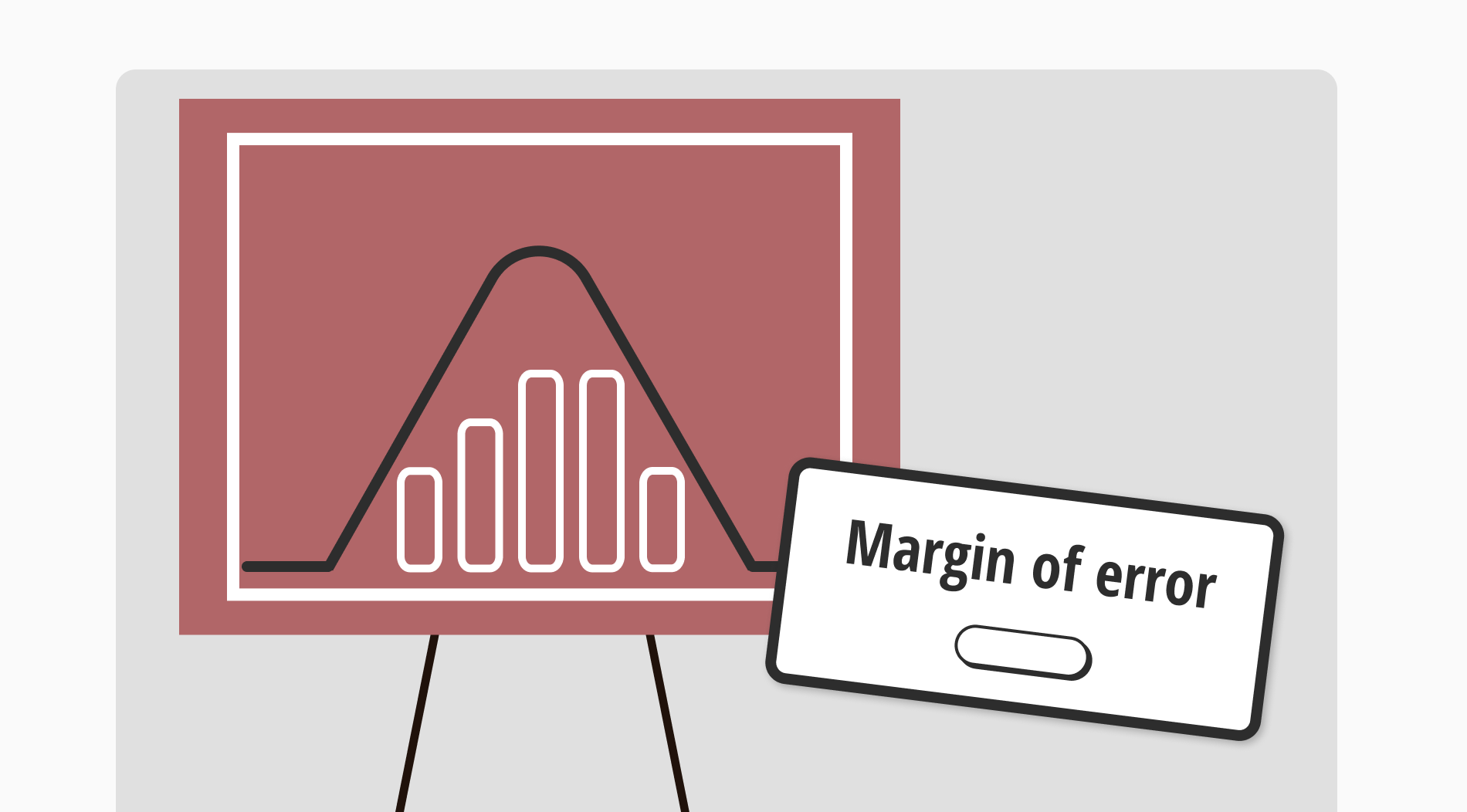
In today’s fast-paced and competitive business landscape, problem-solving techniques have become indispensable for success. From optimizing processes to enhancing customer experiences, these innovative solutions empower businesses to navigate complexities, seize opportunities, and stay ahead of the curve in an increasingly dynamic and interconnected global economy.
Today, we will cover one of these problem-solving methods, the DMAIC Model. It is a structured model used in Six Sigma and other process improvement initiatives. We will explain this model in detail with its examples, advantages, and disadvantages. You will also see answers to some frequently asked questions about the subject. Now, let’s delve into the subject.
What does the DMAIC Model mean?

The DMAIC model offers a structured problem-solving methodology used in Six Sigma and other process improvement endeavors.
DMAIC stands for Define, Measure, Analyze, Improve, and Control, representing the five phases of the process. It helps organizations to identify, analyze, and address issues in their processes to achieve better quality, efficiency, and customer satisfaction.
What is the DMAIC methodology?

THE DMAIC process serves as a methodical problem-solving approach utilized within Six Sigma and other process enhancement procedures.
It includes five distinct stages: Define, Measure, Analyze, Improve, and Control. It guides teams through the process of pinpointing improvement opportunities, analyzing issues’ root causes, implementing effective solutions, and ensuring sustained process enhancement. Now, let’s look at the acronym itself:

The DMAIC template
1. Define
In the Define phase, the project goals and scope are established. This involves identifying the problem or opportunity for improvement and defining specific objectives that align with organizational goals and customer requirements. A key component here is the creation of a project charter, outlining the project scope, objectives, deliverables, stakeholders, and timeline. Teams can ensure alignment and focus throughout the process.
2. Measure
The Measure phase focuses on gathering data to understand the process. This involves identifying process metrics and establishing a baseline performance measurement. Data collection methods may include process observations, surveys, interviews, and the use of measurement tools and technology. The goal of this phase is to quantify the problem or opportunity for improvement and provide a basis for analysis.
3. Analyze
In the Analyze phase, the collected data is analyzed to identify the root causes of process issues or variations. Various statistical and analytical techniques are used to uncover patterns, trends, and relationships within the data. The goal is to gain a deeper understanding of the factors influencing process performance and to discover areas for improvement.
4. Improve
The Improve phase focuses on developing and implementing solutions to address the root causes identified in the previous phase. Creative problem-solving techniques are used to generate and evaluate potential improvement ideas. Once solutions are selected, they are tested and implemented on a small scale to assess their effectiveness before full-scale implementation.
5. Control
The Control phase is concerned with sustaining the improvements achieved and preventing the recurrence of problems. Control measures, such as standard operating procedures, process controls, and monitoring systems, are implemented to ensure that the process remains stable and meets the desired performance targets over time. Continuous monitoring and periodic review are essential to ensure long-term success.
Example of the DMAIC Model
The DMAIC framework can seem complex in theory, but it is quite simple. There are a lot of DMAIC examples in the business world. You can implement it in your own business by creating a DMAIC template. Now, let’s look at a hypothetical scenario in which the company XYZ uses the DMAIC methodology and obtains positive results.
XYZ Company
XYZ Company, a manufacturing firm, applies the DMAIC model to enhance the efficiency of its production process for Product A. Initially facing high defect rates and customer complaints, the company defines the problem, measures defect rates, and analyzes root causes, including machine calibration issues and raw material quality.
Implementing improvements such as machinery recalibration and enhanced quality control measures, XYZ company achieves significant reductions in defect rates, leading to improved product quality, reduced rework, and increased profitability. By following DMAIC’s structured approach XYZ Company systematically identified and addressed the process inefficiencies. It improved its operational performance.
Pros and Cons of Using the DMAIC Model
DMAIC is used to improve processes and ensure continuous improvement. While it offers numerous benefits and advantages in terms of structured problem-solving and continuous improvement, businesses should also be mindful of potential challenges and disadvantages to address them and maximize the model’s effectiveness. That said, let’s look at the advantages and disadvantages:

Advantages and Disadvantages of the DMAIC model
1. Pros
The DMAIC model is more than just a framework. It is a catalyst for organizational transformation. By providing a structured roadmap, it empowers businesses and offers many advantages. Let’s look at some of the advantages and witness how it boosts competitiveness:
- Structured approach: The DMAIC model provides a systematic framework with defined stages (Define, Measure, Analyze, Improve, Control), guiding teams through a structured problem-solving process from problem identification to solution implementation.
- Data-driven decisions: It emphasizes the collection and analysis of relevant data to understand process performance, identify root causes of problems, and make informed decisions for team members based on evidence rather than assumptions.
- Customer focus: Prioritizing the voice of the customer ensures that process improvements align with customer requirements and expectations, ultimately enhancing customer satisfaction and loyalty.
- Continuous improvement culture: The DMAIC framework fosters a culture of continuous improvement within organizations by encouraging teams to regularly review and refine processes, driving incremental enhancements and sustainable performance gains over time.
- Cross-functional collaboration: It promotes collaboration among diverse stakeholders, including process owners, subject matter experts, and frontline employees, encouraging teamwork and shared accountability for problem-solving and improvement initiatives.
2. Cons
Although the DMAIC model boasts numerous advantages in optimizing processes and quality improvement, it may pose challenges for some organizations. Despite its structured approach, some factors, such as resource constraints and resistance to change, can hinder its effectiveness. Let’s explore these potential disadvantages:
- Time and resource-intensive: Implementing DMAIC can require significant time, resources, and investment, particularly for large-scale projects or organizations with complex processes, potentially posing challenges for teams with limited capacity or budget constraints.
- Rigidity and complexity: The structured nature of DMAIC may be perceived as overly rigid and complex, particularly for smaller-scale projects or teams with limited experience in process improvement methodologies, leading to resistance or difficulty in application.
- Resistance to change: Employees may resist the changes introduced by DMAIC, particularly if they perceive it as disruptive to established workflows or if there is a lack of buy-in or understanding of the benefits of process improvement initiatives.
- Lack of flexibility: The DMAIC model’s predefined stages and sequential approach may lack flexibility, making it less adaptable to dynamic or rapidly changing environments where agile or iterative problem-solving approaches may be more suitable.
- Overemphasis on analysis: Excessive focus on data analysts and measurement in DMAIC may lead to analysis paralysis, where teams become overly focused on data collection and analysis at the expense of action and implementation, delaying progress and limiting the effectiveness of improvement efforts.
Frequently asked questions about the DMAIC model
As we can see, the DMAIC model has both advantages and disadvantages, which means you should always be careful and consider your specific requirements and constraints. Now, let’s answer some of the most frequently asked questions about the DMAIC framework:
L'analyse matricielle de la décision consiste à définir le problème de la décision, à identifier les critères pertinents, à attribuer un poids aux critères, à dresser la liste des options disponibles, à évaluer les options en fonction des critères, à attribuer une note aux options et à sélectionner l'option ayant obtenu la note la plus élevée. Cette approche structurée permet aux décideurs d'évaluer objectivement les choix, de hiérarchiser les préférences et, en fin de compte, de prendre des décisions judicieuses fondées sur une analyse approfondie.
Le modèle DMAIC comprend cinq phases séquentielles. Tout d'abord, la phase "Définir" fixe les objectifs du projet et les exigences du client. "Mesurer" quantifie les données afin d'établir des bases de référence. "Analyser" identifie les causes profondes du problème. "Améliorer" développe et met en œuvre des solutions. Enfin, "Contrôler" établit des mesures pour maintenir les améliorations et surveiller les performances, afin de garantir une efficacité continue dans la résolution des problèmes opérationnels.
L'objectif principal de la méthode DMAIC (Définir, Mesurer, Analyser, Améliorer, Contrôler) est d'identifier, d'analyser et d'améliorer systématiquement les processus au sein d'une organisation afin d'accroître l'efficacité, la qualité et la satisfaction des clients. En suivant cette approche structurée de résolution des problèmes, la méthode DMAIC vise à favoriser l'amélioration continue, à optimiser les performances et à obtenir des résultats durables, ce qui favorise en fin de compte une culture de l'excellence et de la compétitivité.
La phase "Mesure" du modèle DMAIC consiste à quantifier et à collecter des données relatives au problème ou au processus identifié. Son principal objectif est d'établir une compréhension de base de l'état actuel, en fournissant une base factuelle pour l'analyse. Grâce à des mesures et à des analyses minutieuses, cette phase permet aux organisations de mieux comprendre les performances des processus, d'identifier les domaines à améliorer et de suivre les progrès accomplis.
Le Six Sigma ou DMAIC Six Sigma est une méthodologie axée sur les données visant à améliorer les processus d'entreprise et à réduire les défauts ou les variations. Elle se compose de cinq étapes : Définir, Mesurer, Analyser, Améliorer et Contrôler. Au cours de la phase de définition, les objectifs du projet, les exigences du client et les produits à livrer sont définis.
La phase de mesure consiste à quantifier et à collecter des données afin de comprendre les performances actuelles du processus et d'établir une base de référence pour l'amélioration. Au cours de la phase d'analyse, les données sont analysées afin d'identifier les causes profondes. La phase d'amélioration se concentre sur l'élaboration et la mise en œuvre de solutions visant à résoudre les problèmes identifiés et à optimiser le processus. Les solutions sont testées et affinées pour garantir leur efficacité.
Final words
In conclusion, the DMAIC Model is a valuable tool to improve quality. Businesses can use this 5-step framework to encourage dynamic problem-solving. We have seen a detailed definition, an example as well as advantages and disadvantages of this model. You can start implementing it in your own business and see the difference!
Fatih is a content writer at forms.app and a translator specializing in many text domains, including medical, legal, and technical. He loves studying foreign languages. Fatih especially likes to create content about program management, organizational models, and planning tools.



 4 minutes de lecture
4 minutes de lecture

